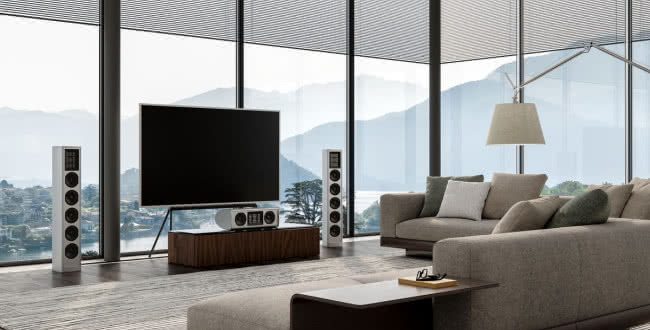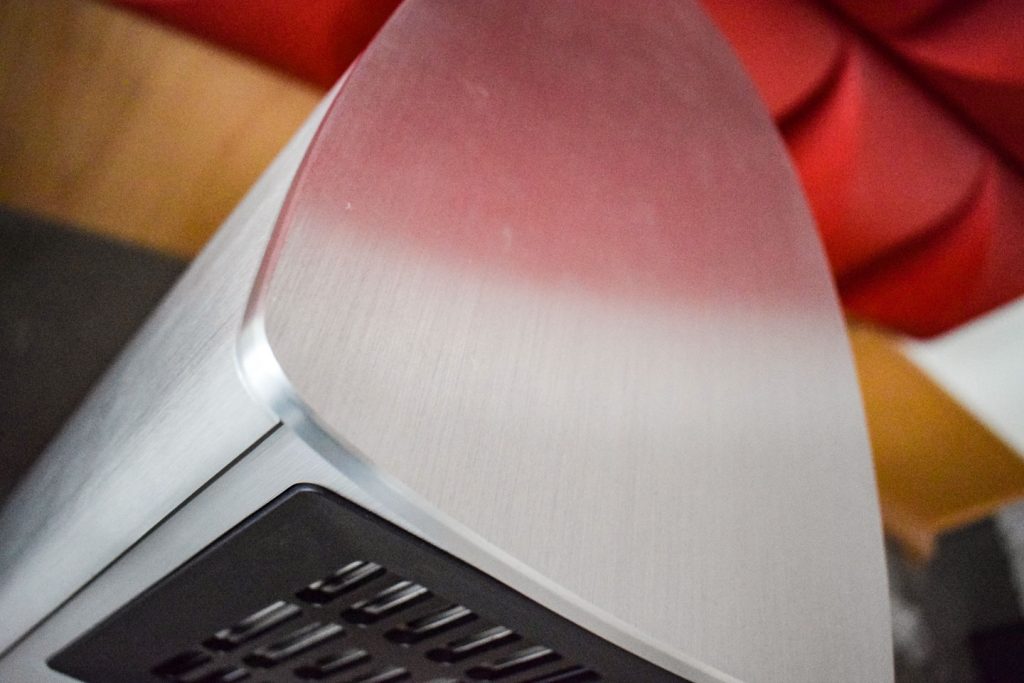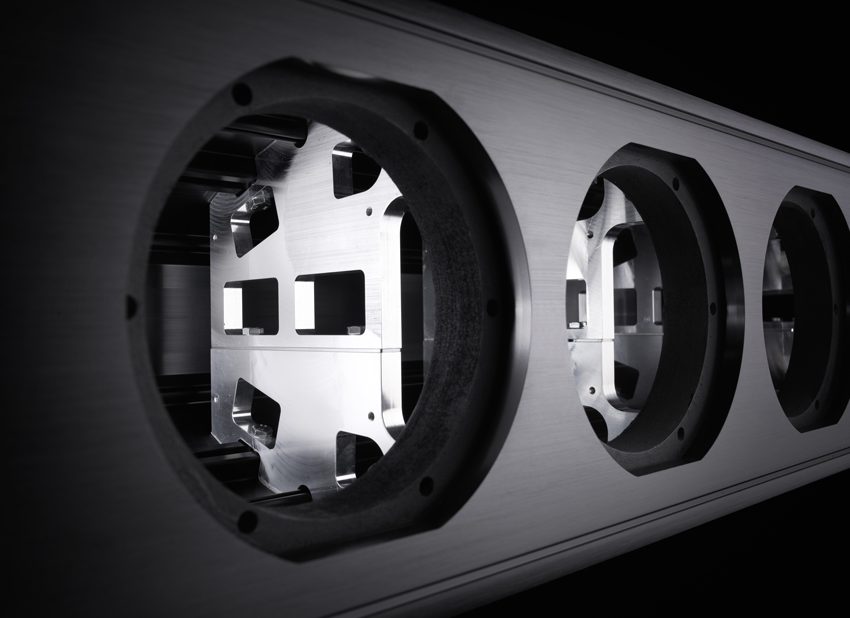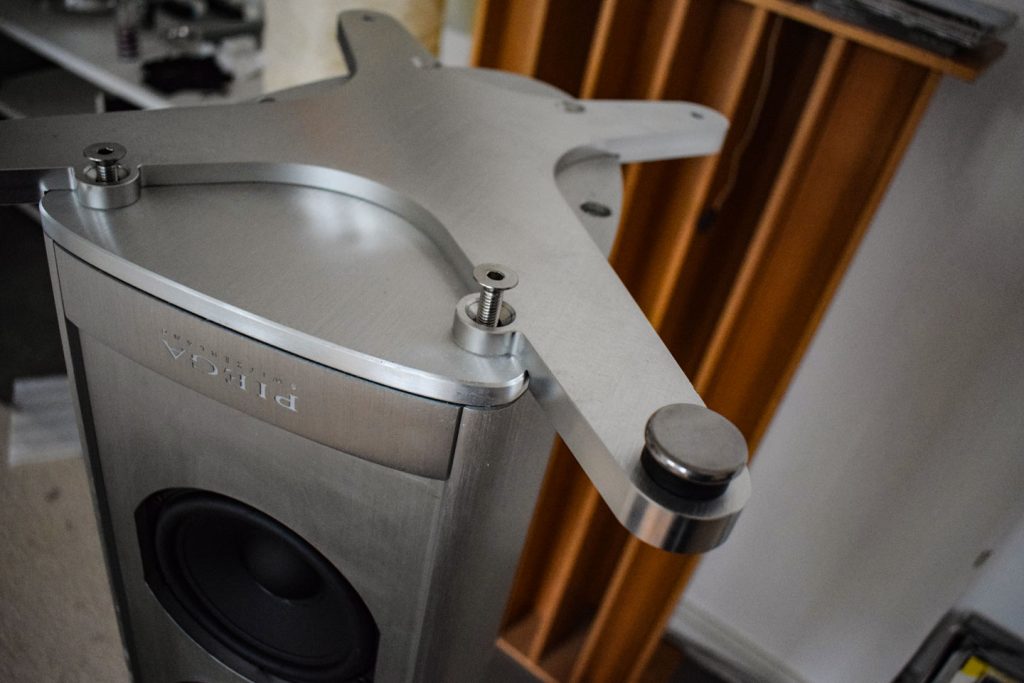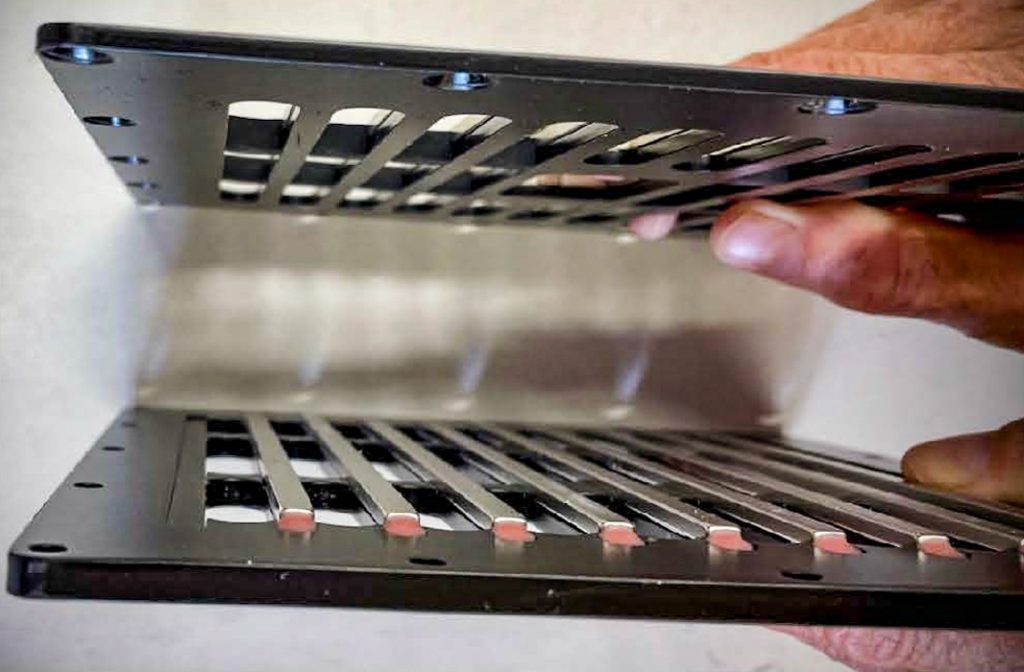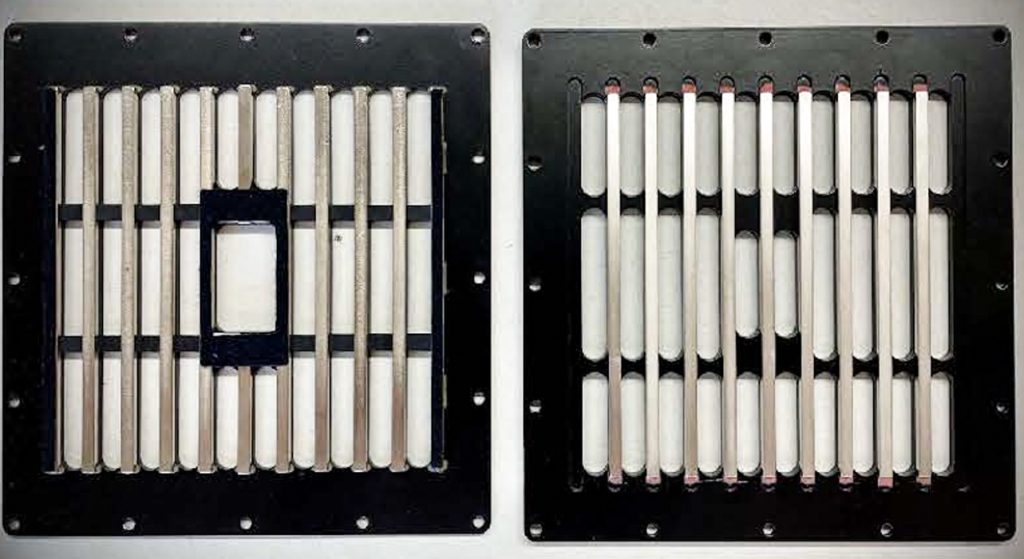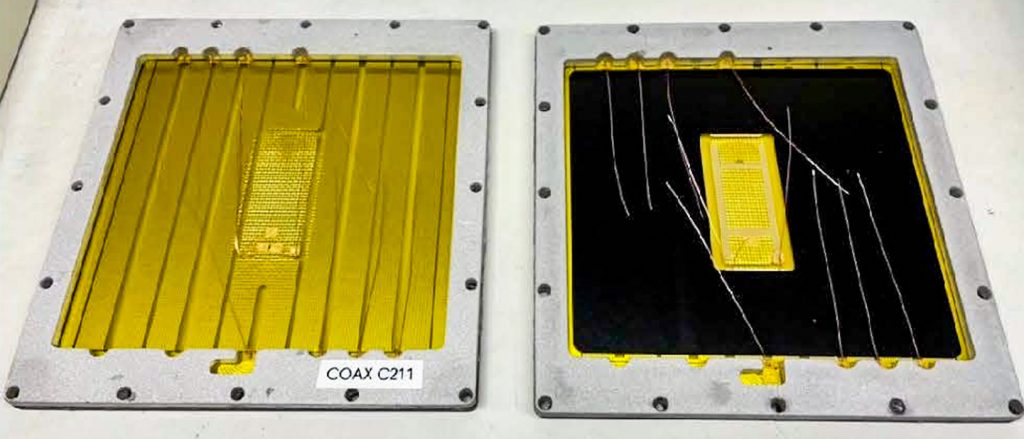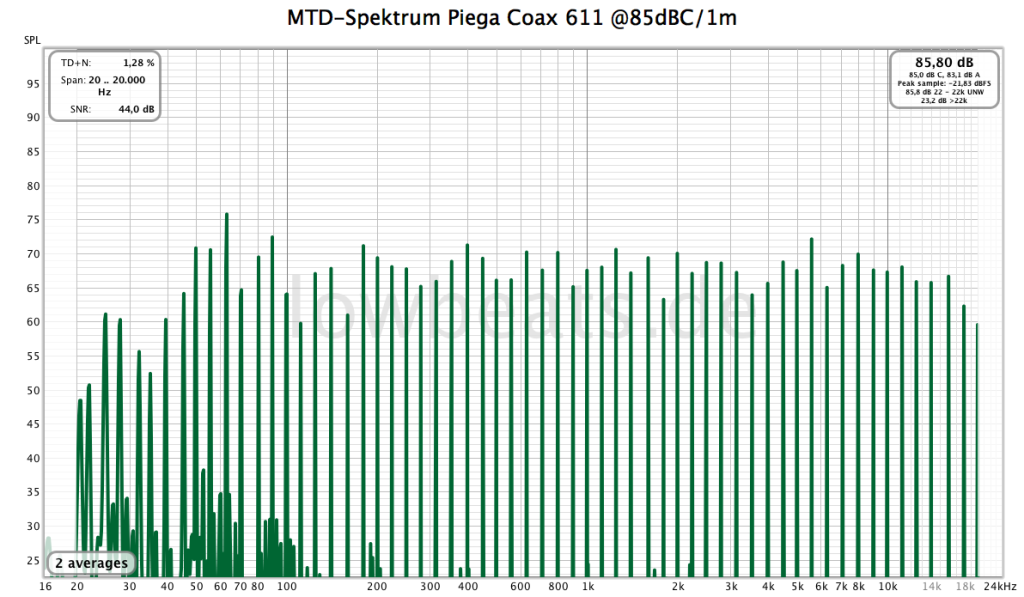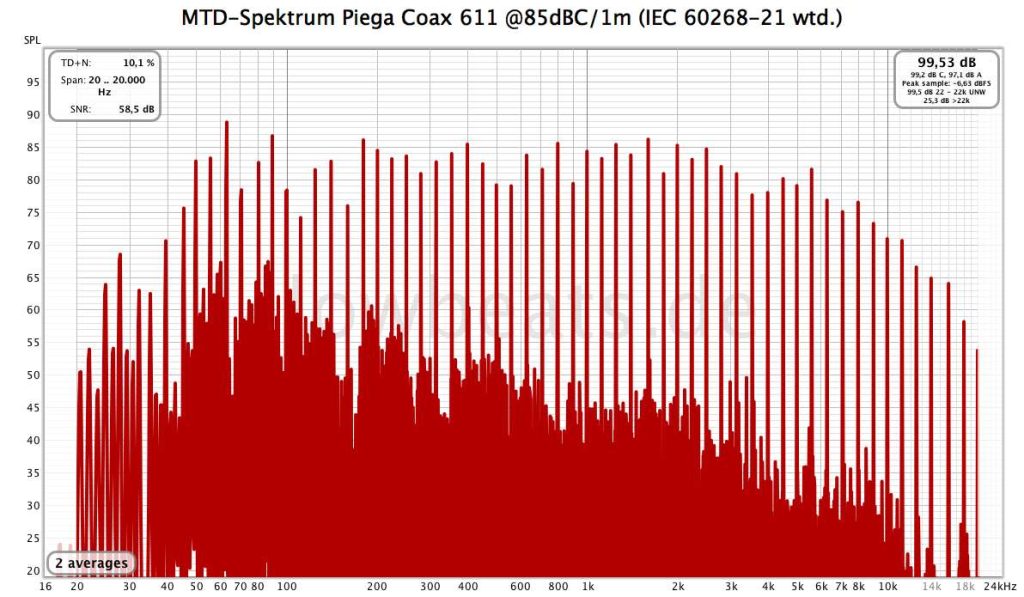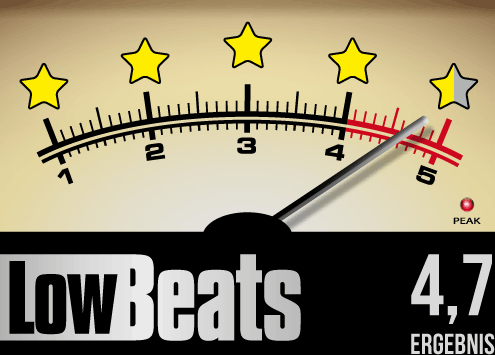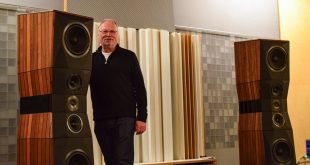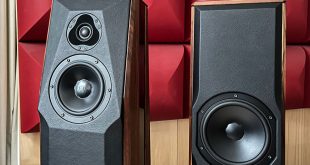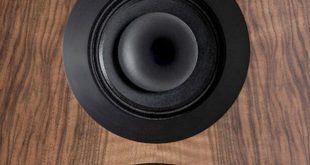I have been following the history of Piega since its beginnings. And of course, as a proven ribbon fan, I was very pleased that the Swiss (at least in the tweeter) consistently applied this principle. I was almost electrified when company co-founder and developer Kurt Scheuch came around the corner with the idea of a coaxial ribbon midrange tweeter. How cool was that…?! In fact, this stroke of genius catapulted the Swiss technologically into the world elite of loudspeaker construction for many years. This legendary coaxial driver now has a successor. And what can I say: with the GEN2 version of this exceptional driver, its sonic advantages are even more clearly audible. We tested the new Piega Coax 611. And in terms of sound, it’s a high-flyer.
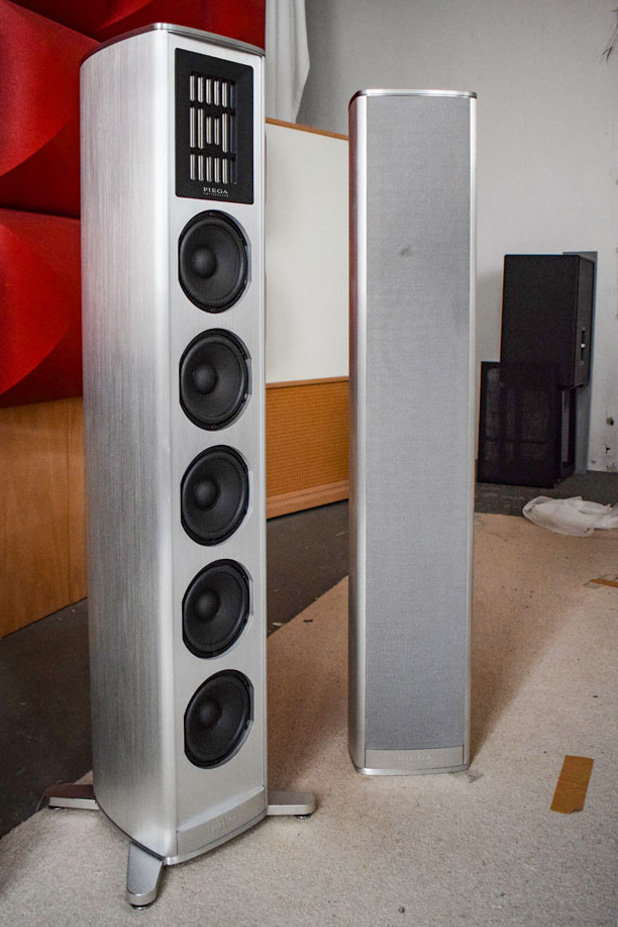
The special features of the Piega Coax 611
Let’s start with the housing. As usual with Piega, it is made of aluminum and has the characteristic boat shape, which has proven to be particularly acoustically advantageous not only for Piega. And the Coax 611 looks just like one of its predecessors. However, Piega designer Stephan Hürlemann has lowered the hull slightly. This makes the proportions appear more harmonious.

The thickness of the housing walls is five millimeters, that of the baffle eight millimeters. The rigidity is therefore enormous – in any case much higher than with the MDF usually used. The shape and individual reinforcements on the strand additionally increase the strength. The workmanship – you can feel it at every point – is absolutely top.
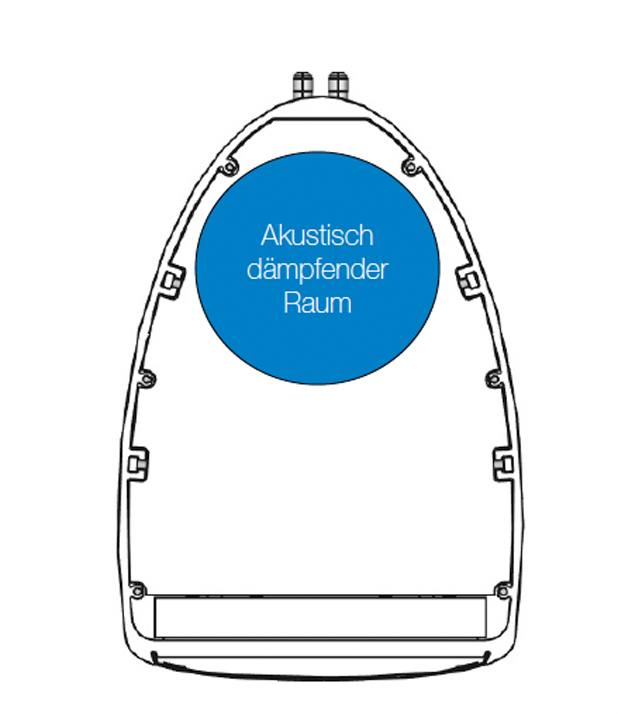
As with the US-American high-end Magico, the Piega cabinet is placed under tension and the metal dividers are firmly screwed to the cabinet. This significantly reduces possible resonances. Combined with sophisticated damping using acoustic mats, the result is a virtually perfect enclosure. If you do the classic ankle test, all you hear is a perfectly muffled “thud”. That’s how it should be.
The central component of the Piega Coax 611 is of course the ribbon-based mid-high coax. This is a fairly large (but extremely light) oscillating surface with a separately controlled and narrowly corrugated foil in the center. The advantage: the tweeter and midrange are on exactly the same axis. These are the best prerequisites for precise spatiality.
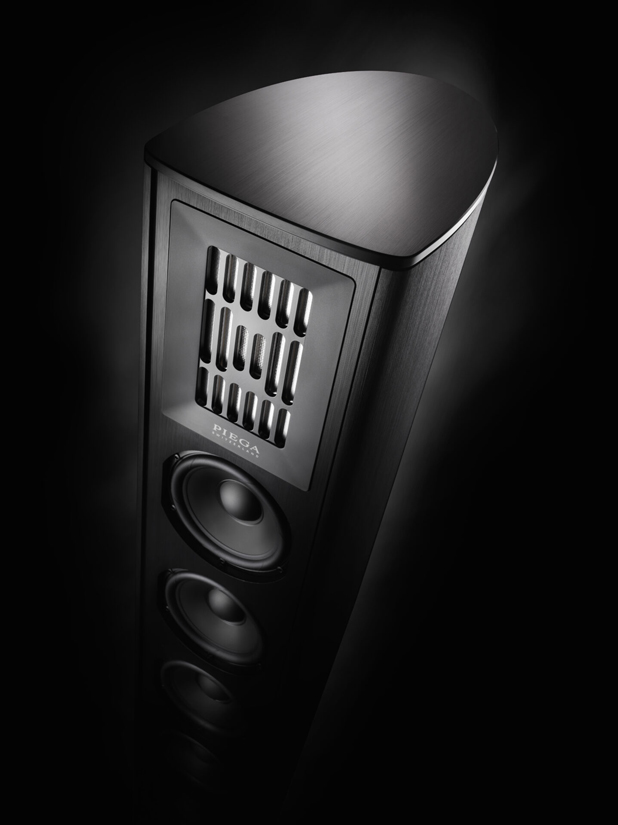
The GEN2 generation is still very young and has been improved by the new Piega development manager Roger Kessler according to all the rules of the art. Unfortunately, I didn’t have a speaker with “old” coax available for the test. But I’ve heard so many of them that I’ve been able to see progress perfectly. And the progress is also visible on the outside:
All these measures together result in a system with significantly lower resonance and correspondingly higher sound pressure reserves. Here it is the comparatively small woofers that limit the maximum level of the system.
And this brings us to the third special feature of the Coax 611: the long array of woofers. Five of the 16-centimeter basses are lined up on the front. But what looks like a lot of bass power is actually a bit of a Potemkin village: from the front they look the same, from the back the lower three lack magnets – so they are passive radiators. These passive diaphragms have a similar function to a bass reflex tube and amplify the low frequencies in the lower bass range.
Practice
Although the Coax 611 is quite impressive at 117 centimeters, its maximum level remains at a rather average level. As mentioned above, the speaker is limited by the two woofers with a diameter of “only” 16 centimeters. For basses of this format, the maximum continuous sound pressure level of just under 100 decibels is a decent value – especially as levels of up to 111 decibels are possible for short periods. But the size of the Coax 611 initially promises more…
In terms of impedance and phase, the Piega Coax 611 is simply exemplary. Linear curves and an impedance that is always above 4 ohms are ideal prerequisites for combination with any type of amplifier. As usual, we also did a run-through with tube amps – in this case a Fezz Audio Titania with 2 x 50 watts (price: 2,600 euros). There was nothing to complain about: It just sounded wonderfully fine.
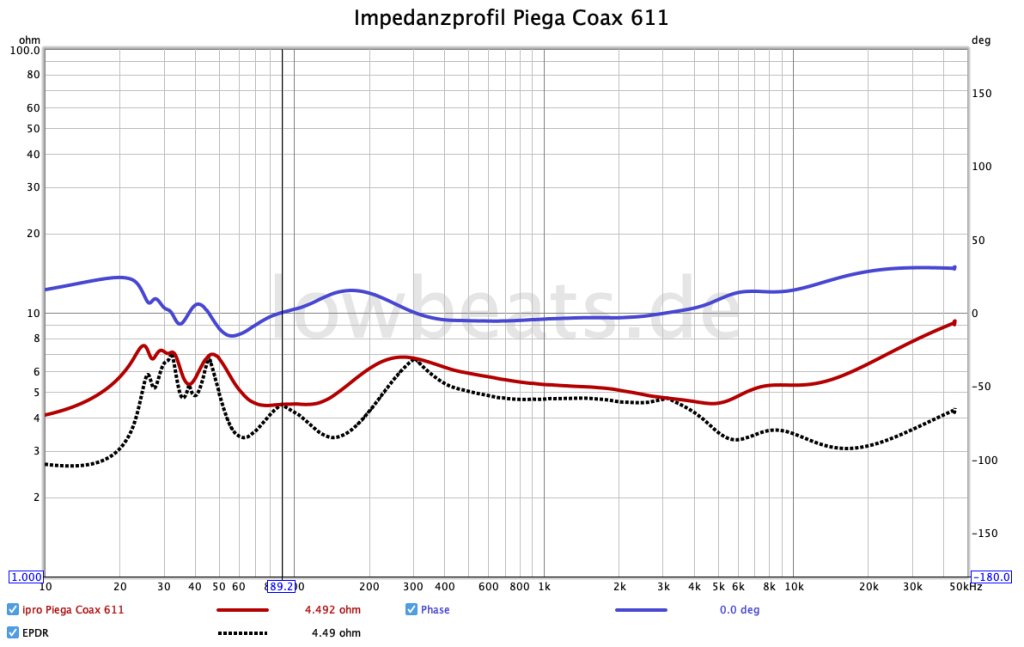
However, we recently added the large Canor pre/power amp combination Hyperion P1 + Virtus M1 to our listening room as a reference amplifier. And it sounds so convincing that you no longer want to switch to the smaller amps… And there’s another point that rounds off the Coax 611’s thoroughly convincing performance: Because its bass is tuned more for clean impulse than for cozy fullness, I had no problems at all when setting it up. Even quite close to the back wall, the Swiss column just sounded good.
Hearing test
Piega had kindly provided us with a pair of well-recorded Coax 611s and so the magic of these speakers began to unfold as soon as we unpacked them. It all sounded so right from the start that I couldn’t tear myself away for hours.
Most hi-fi enthusiasts have probably already heard the advantages of a ribbon tweeter. There is something incredibly natural and easy about it. The same principle pulled down to 450 Hertz is overwhelming – at least when it is implemented well, as with the Coax 611. What makes this speaker stand out, however, is the absolutely harmonious combination with the two 16-centimeter basses. There was not even the hint of a break here.
Actually, I don’t want to start this discussion about a relatively heavy bass cone in combination with ultra-light mid-high foils. There are many speakers that sound inhomogeneous because of this dilemma. But there are also a number of counterexamples. Like the Coax 611, for example, where this transition is simply perfect. The cone mass of the 16-centimeter basses obviously still seems small and fast enough to follow the extreme impulse accuracy of the Coax GEN2.
Piano music reliably separates the wheat from the chaff here. The Ambient Jazz Ensemble has almost always been on my listening list recently. And with Jazz Face, the Piega immediately made a statement: the effortless way in which the individual piano strokes sparkled out of the loudspeaker and the absolutely seamless way in which the saxophone and the entire brass section played over it was simply breathtaking. And the whole thing is accompanied by an always clean, accentuated bass. I had never heard this music so coherent, so real. Or “Wendekreis des Steinbocks” by pianist Wolfgang Dauner (*1935 – †2020), where there is a wonderful dynamic interplay between the very high and very low registers. The Piega demonstrates such a seamless transparency that it is hard to imagine a more coherent sound.
Another thing I like to test is a reading by Wiglaf Droste, who has sadly also passed away. “Herbert kann nicht tanzen” (“Herbert can’t dance”) is a funny and biting look at Herbert Grönemeyer’s (German singer, musican and actor) concerts. The microphone is very close, the audience is sitting right in front of him and you can hear every laugh and every clap.
It is outstanding how precisely the Piega brings out all the details and yet remains absolutely stress-free. Everything comes across smoothly and effortlessly, without the mids or highs being emphasized in any way – something you often hear with other speakers that suggest such midrange transparency. What we still need to talk about is the musical illustration. If you already have a driver as ideal as the coax, the spatiality must be almost perfect, right? It is. The individual voices or instruments may not be very large, but they are portrayed extremely vividly. That also seems absolutely right.
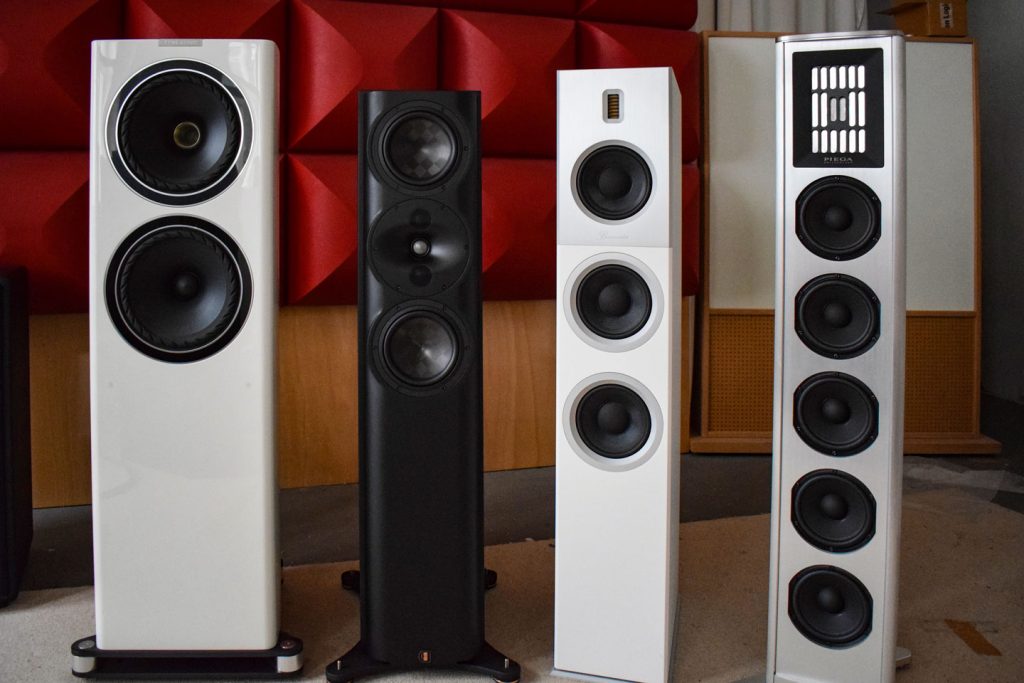
And how does the Coax 611 compare to the competition? Outstandingly good. The picture shows four loudspeakers in this class that Piega had to deal with, among others. The slender Swiss woman proved to be the most discreet. The Fyne Audio may be a touch more boyish over the entire listening range, but it is brutally dynamic. For fans of loud jazz or rock recordings, there is hardly anything better. The Perlisten is also extremely impulsive, but its focus is clearly in the middle: hardly any other speaker shows so much energy and so much detail here. It quickly becomes clear that it is intended to bridge the gap to home cinema.
The Burmester B28 is possibly the toughest competitor to the Coax 611. The Berlin model, which also has an outstanding finish, sounds a little snappier and more precise, more impressive with hard-hitting snare and bass drums and also delights with a wonderfully open sound. And like the other two, the B28 outperformed the Piega in terms of level. But that doesn’t change anything: the Piega is second to none when it comes to this detailed fine silkiness, this continuous homogeneity across the entire listening range. That is simply great.
Conclusion Coax 611
This floorstanding loudspeaker simply thrilled me. It’s not just the best Piega I’ve ever heard: Because we’ve had (and still have) quite a few speakers in this class on test in recent months, I can also say with certainty that the Coax 611 is one of the best deals under 20,000 euros. I haven’t heard such a discreet performance and such a high level of tonal sophistication for a long time, and I don’t know of a significantly more expensive speaker that would really be better in terms of richness of detail and harmony. Added to this is the perfect workmanship and electrical simplicity that should please any amplifier. If you don’t want to drive brute volumes or fill huge halls with sound, the Coax 611 is a dream sound transducer for life.
Rating
Sound QualityUsabilityBuild QualitySummary |
| The rating always refers to the respective price category. |
| | Extremely harmonious, natural, open and precise sound |
| | Absolutely uncomplicated electrically |
| | Easy to set up |
| | Outstandingly good workmanship, excellent solid housing |
Distribution:
Piega SA
Bahnhofstr. 29
810 Horgen / Switzerland
www.piega.ch
Pair price (manufacturer’s recommendation):
Piega Coax 611: 14,900 euros
Technical data
| Piega Coax 611 | |
|---|---|
| Concept: | 3-way floorstanding speaker |
| Fitting: | 2 x 16 cm bass, 3 x 16 cm Passi-Radiator, 1 x MHT coaxial ribbon |
| Special feature: | Aluminum housing |
| efficiency (@2.83 V/1m): | 84.6 decibels |
| Maximum level (permanent/short-term): | 99 / 111 decibels |
| Minimum power for max. level | 125 watts per channel |
| Dimensions (W x H x D): | 117.0 × 21.0 × 31.0 cm |
| Weight: | 45.0 kilogram |
| All technical data | |
Teammates and opponents:
Test floorstanding speaker Fyne Audio F703: the original power
Test pre/power amp combination Canor Hyperion P1 + Virtus M1
More from Piega:
Test Piega Ace 30 Wireless: modernized confederates
Test floorstanding speaker Piega Ace 50: the epitome of the living room speaker
Test floorstanding speaker Piega Premium 701
Installation: the hidden home theater with Piega
Test Piega AP 1.2: the high-end mini speaker



